Berghaus Eller, designed for a couple with two children nearing university age, nestles among the Austrian Alps in the minute mountainside municipality of Blons—in Vorarlberg, the country’s westernmost state. A neutral exterior, made from cross-laminated spruce, allows the small three-story house to blend gently into its Alpine scenery in the winter months, especially with its seasonal cap of snow. While its clean lines and simple materiality indicate a modern aesthetic, the architects relied on centuries-old wisdom that marks the region’s traditional architecture to design and construct the high-altitude project.
At an elevation of 2,963 feet, which attracts hikers and skiers, Blons is part of the picturesque valley region of Großwalsertal, named after the Walsers, a nomadic people of Germanic origin who settled among various high-altitude sections of the Alps in the 12th and 13th centuries.
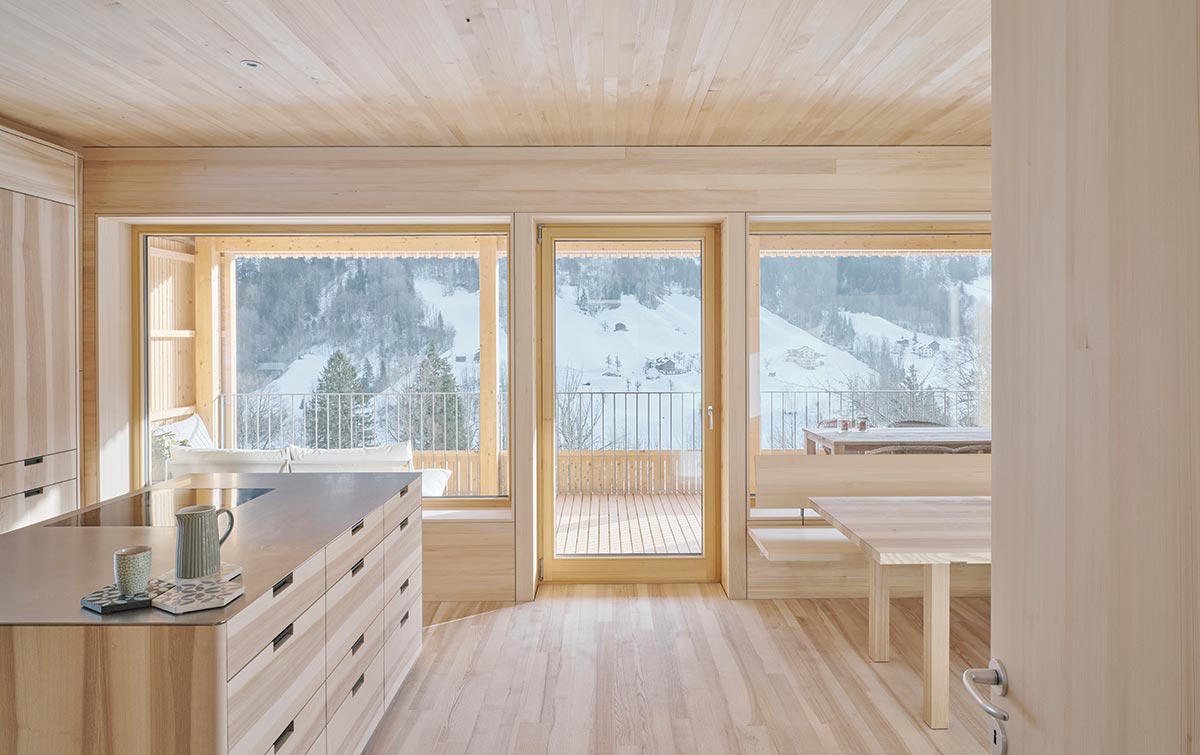
1
A detached garage is adjacent to the house’s north entrance (top of page), which leads directly into the living/dining space (1) and the south-facing terrace beyond (2). Photos © David Schreyer, click to enlarge.
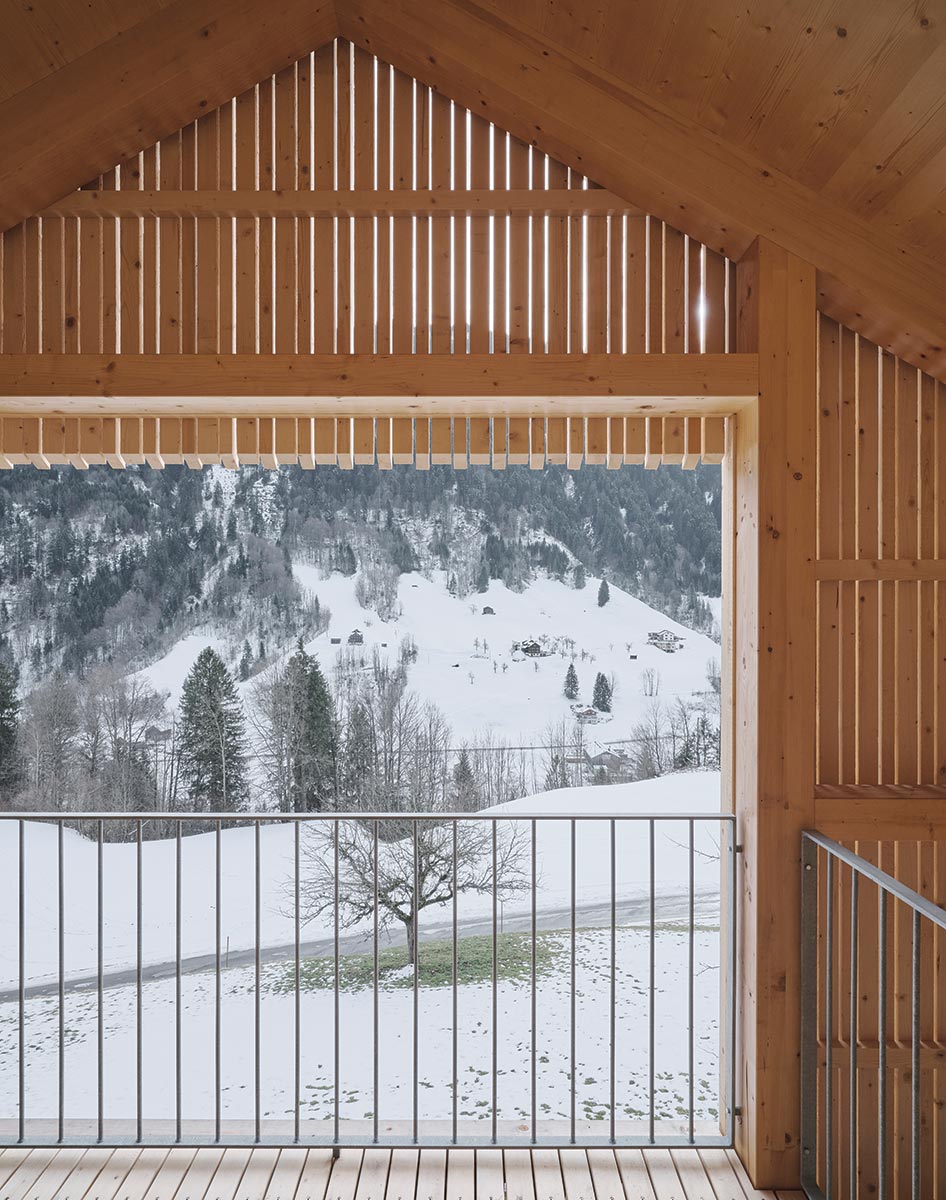
2
“The Walsers were known for living among these steep-sided mountains, where you have to deal with extreme topography,” says Sven Matt of Innauer Matt Architekten, the local firm that designed Berghaus Eller—and on a tight budget. “They couldn’t modulate the landscape, as they didn’t have the manpower—or the machines—to move a lot of earth.”
So, following the Walsers’ example, the design team worked with the existing terrain by stacking the 1,420-square-foot house upward from a small footprint, with the bottom level wedged into the slope’s sharp angle and its main gabled facade oriented downhill, toward the south, to maximize sunlight and minimize windchill.
The Ellers hail from Germany but have lived in Vorarlberg for nearly 20 years. Like the Walsers, the family has done their own wandering, renting apartments throughout the region—making the Berghaus their first permanent home in Austria. Claudia, who teaches at a local school, and Edgar, who runs an urban-development consulting firm, chose to settle in the 330-person community for its sunlight, unobstructed views, and proximity to nature. Surrounded by a scattering of neighbors, near the end of a winding mountain road, Berghaus Eller is only an hour from the borders of Germany to the north and Switzerland to the west, offering both isolation and access.
The entrance is on the building’s north side and leads directly into the second level of the house, which contains the family’s shared space in an open plan, with areas for cooking, dining, and gathering. This living room includes an integrated wood-burning stove, which heats the entire house, with water heated by solar panels on the roof. The primary bedroom is on the third floor, and two smaller bedrooms for the children are on the bottom level.
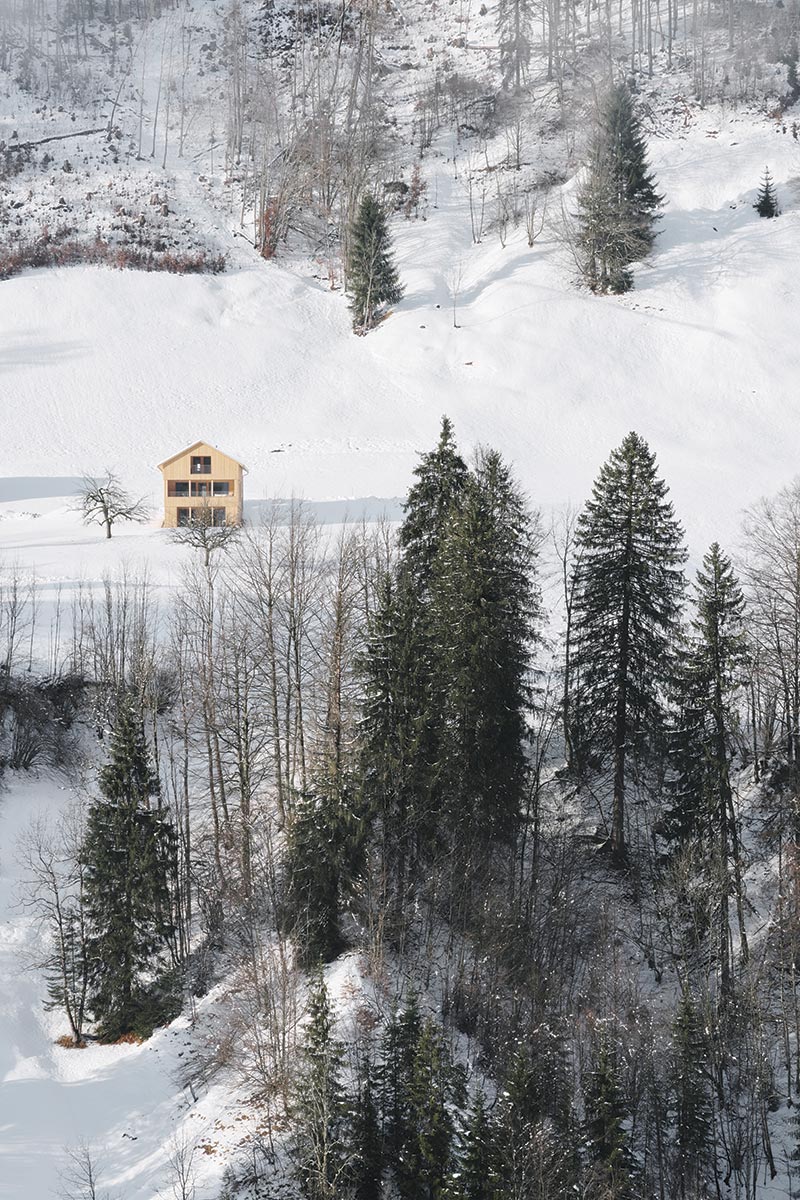
The terraces on the house’s south side offer majestic valley views. Photo © David Schreyer
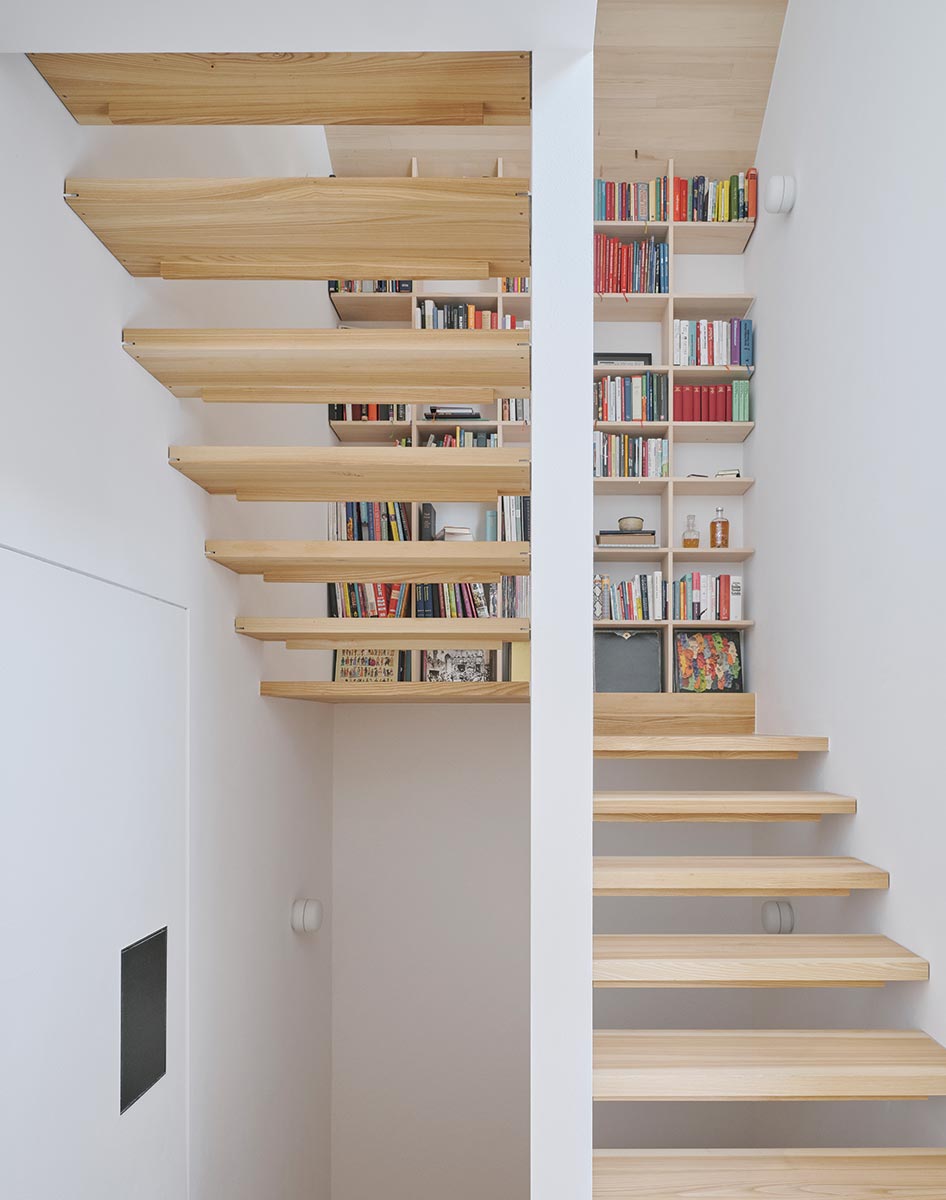
Stairs lead above and below to the bedrooms. Photo © David Schreyer
“The main idea was to have this shared middle floor as a meeting space,” says Matt. “The family has private spaces above and below, but they come together in this space for daily life.” On the south side of the house, each level has a semi-enclosed terrace—a traditional feature of houses here that expands interior living spaces to the outdoors—constructed with glulam columns and beams.
Prefabricated walls and ceilings are made from solid fir and joined together largely using wooden joints instead of screws. Innauer Matt modernized this traditional hand-built method by fabricating the joints using CNC machinery. The furniture is also made from wood, with the built-in kitchen counters, dining table, and benches custom-built from ash by local craftsmen. “Our portfolio covers a wide range of typologies and scales, but timber is the line that runs through all of our projects,” says Matt, who cofounded the firm in 2012 with Markus Innauer. “We work in a timber-centric location, regarding both construction technique and craftsmanship.”
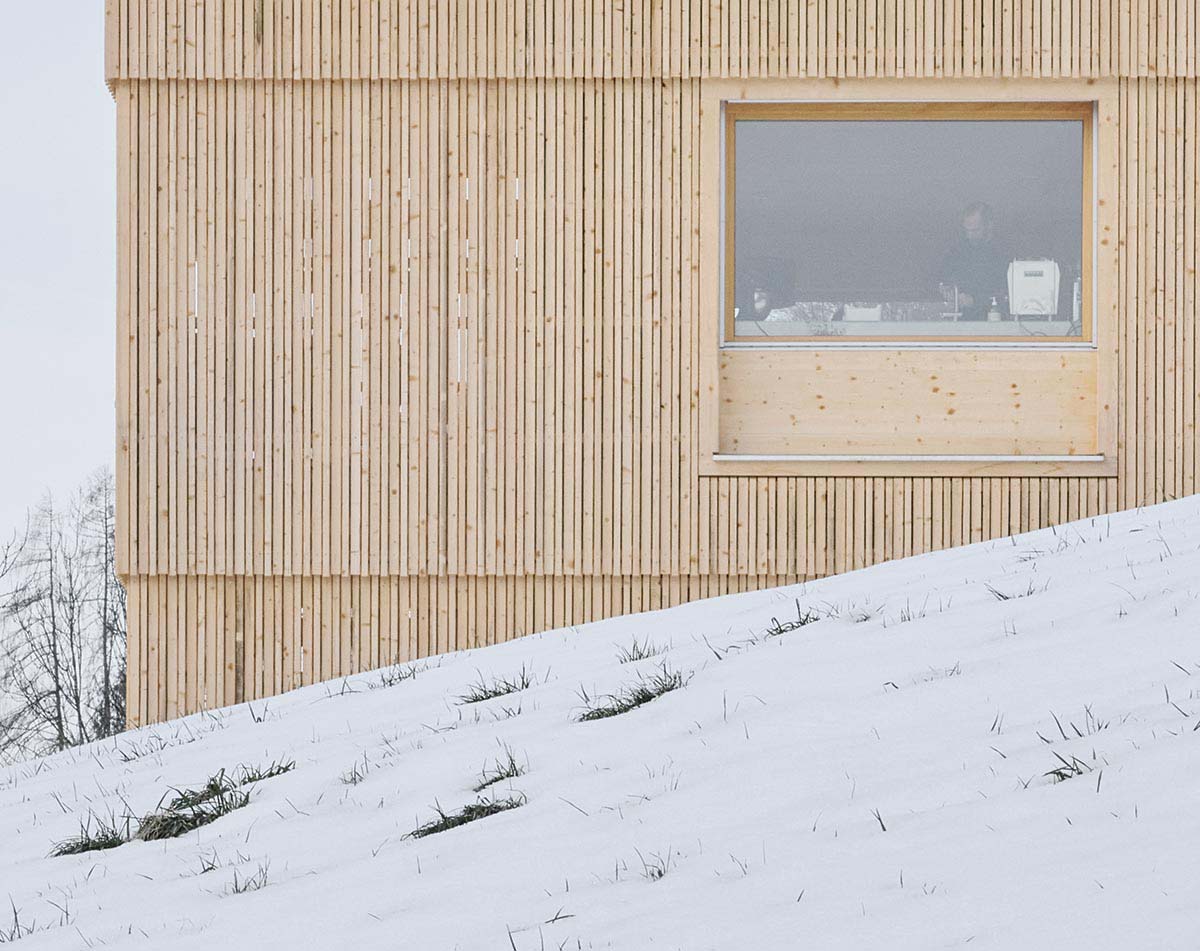
Cross-laminated, locally sourced spruce makes up the slats of the facade (above), which is layered with a subtle indent at each floor. Photo © David Schreyer
The Ellers requested that all of the timber used for the project be locally sourced, including the cross-laminated spruce on the facade. Each level of this cladding, which envelopes the entire building, is made up of vertical, slightly spaced timber slats. On the south side, the resulting gaps allow light to permeate the terraces and interior, while on the other elevations, the slatting covers an 8-inch layer of wood fiber insulation. “We are most proud of the facade,” says Matt. “There’s a fineness to it, and the wood gives it a soft quality.”
Perched among the peaks, Bergaus Eller continues an age-old architectural legacy, and revives it for future generations.
Click section to enlarge
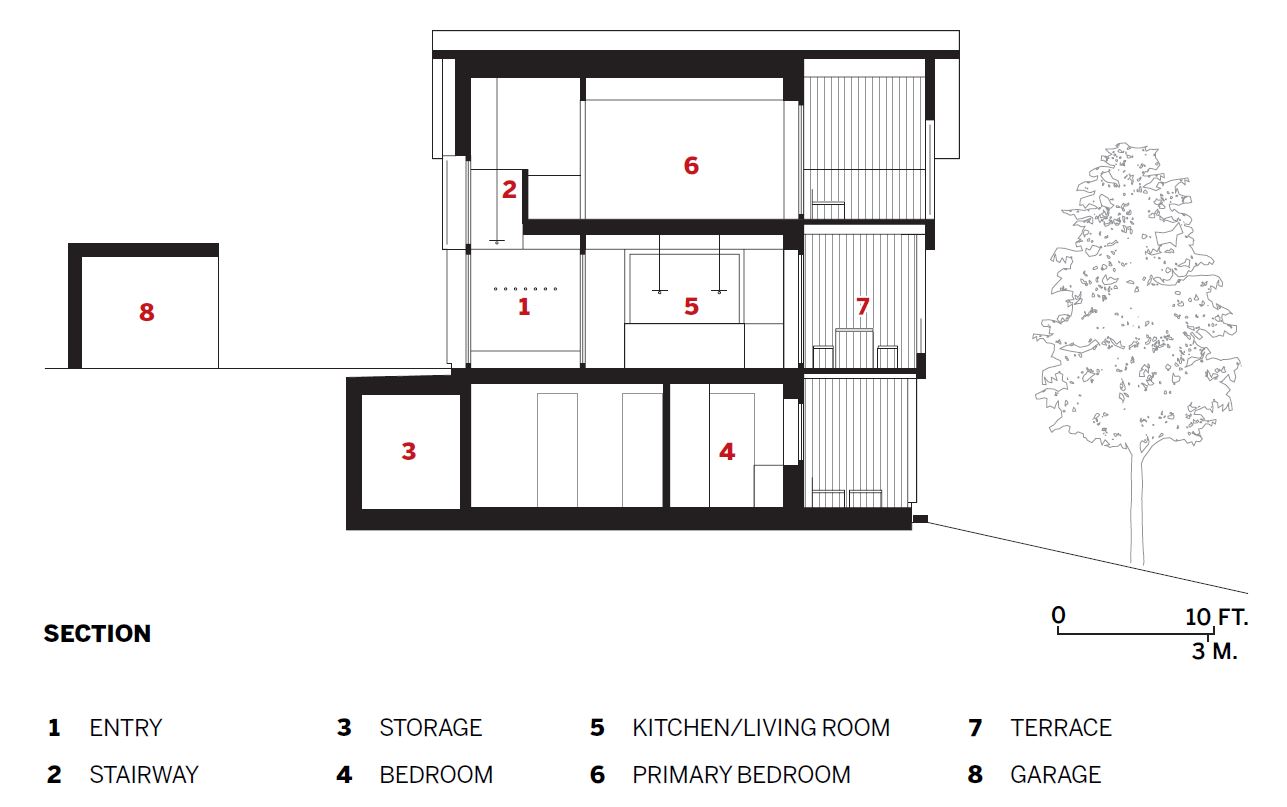
Credits
Architect:
Innauer Matt — Markus Innauer, Sven Matt, principals; Simon Moosbrugger, project lead; Alexander Sparr, construction manager
Engineer:
ZTE Leitner
General Contractor:
Zimmerei Heiseler
Client:
The Eller family
Size:
1,420 square feet
Cost:
$430,000



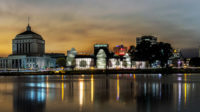

Post a comment to this article
Report Abusive Comment